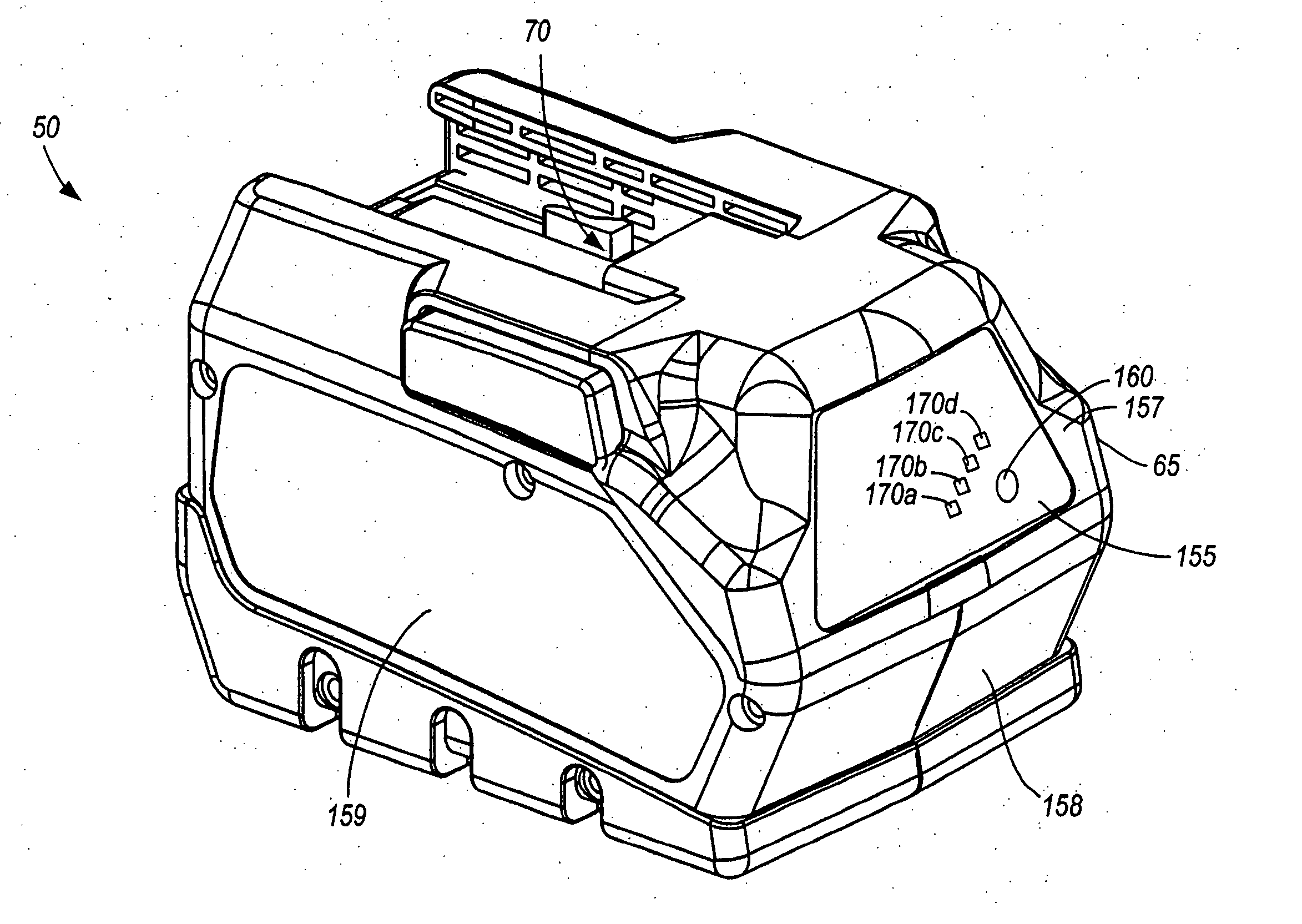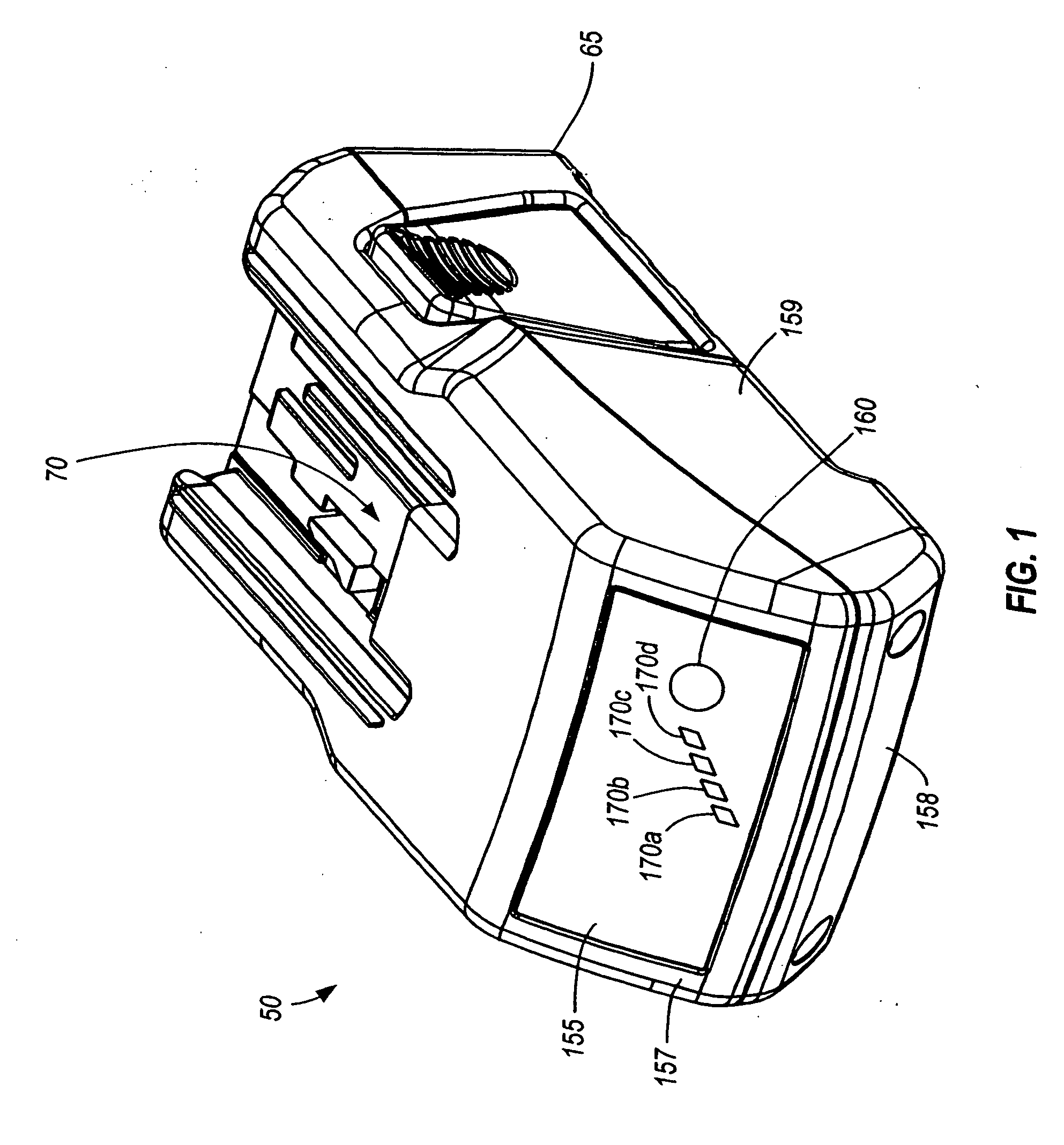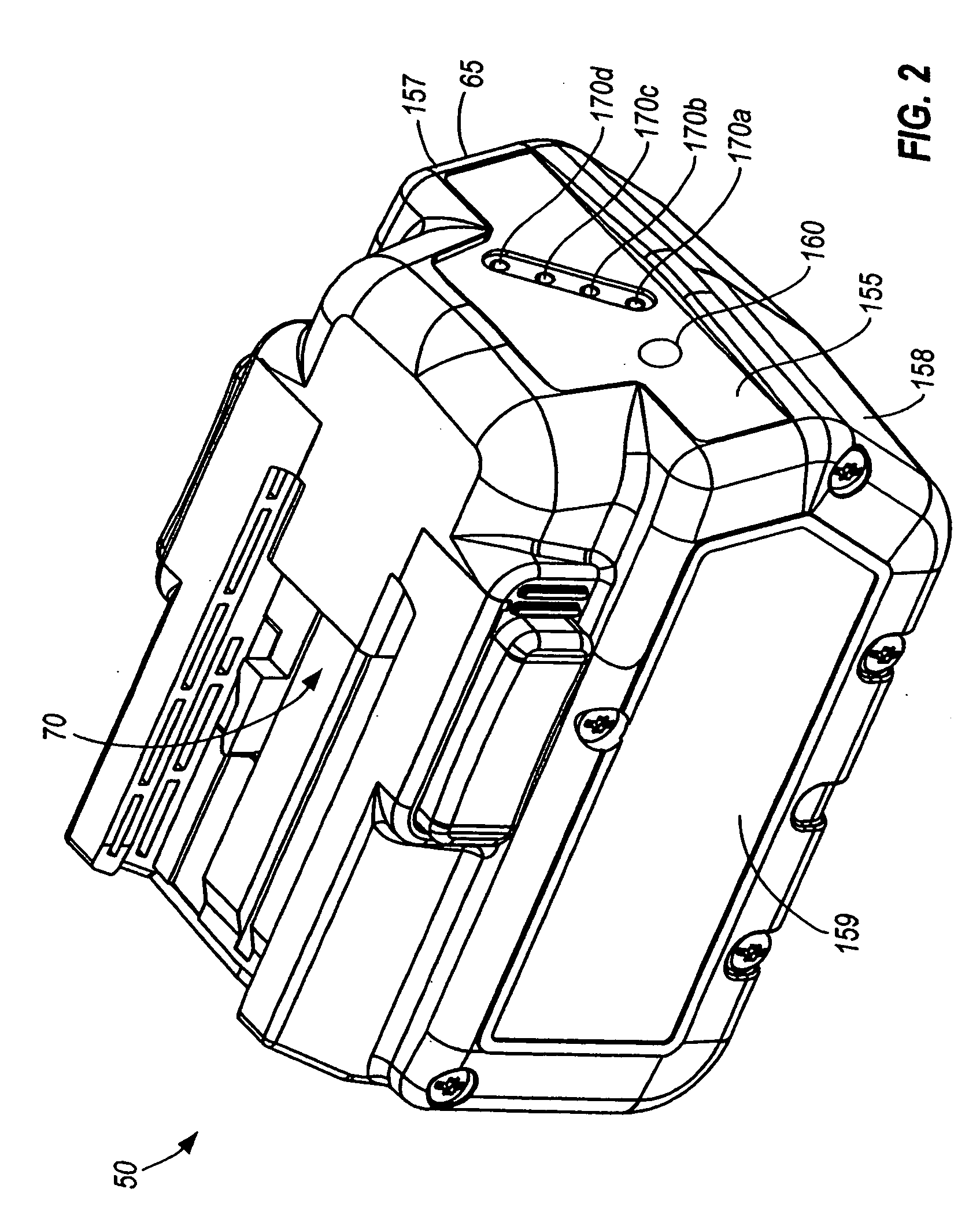Method and system for battery protection
a battery protection and battery technology, applied in the field of battery protection methods and systems, can solve the problems of irreversible damage to batteries, excessive heat build-up, and excessive overdischarge conditions, and achieve the effect of shortening the life of the battery pack
- Summary
- Abstract
- Description
- Claims
- Application Information
AI Technical Summary
Benefits of technology
Problems solved by technology
Method used
Image
Examples
Embodiment Construction
[0126] A battery pack or battery 50 is illustrated in FIGS. 1-3. The battery 50 can be configured for transferring power to and receiving power from one or more electrical devices, such as, for example, a power tool 55 (shown in FIGS. 4-5), a battery charger 60 (shown in FIG. 24) and the like. As shown in the constructions illustrated in FIGS. 4 and 5, the battery 50 can transfer power to various power tools, such as, for example, a circular saw 56, a driver drill 58, a reciprocating saw (not shown), a band saw (not shown), an impact wrench (not shown), a right-angle drill (not shown), a work light (not shown) and the like. In some constructions and in some aspects, the battery 50 can supply a high discharge current to electrical devices, such as, for example, a power tool 55, having high-current discharge rates. For example, the battery 50 can power a wide range of power tools 55 including a circular saw 56, a driver drill 58, and the like, as shown in FIGS. 4 and 5 and mentioned a...
PUM
 Login to View More
Login to View More Abstract
Description
Claims
Application Information
 Login to View More
Login to View More - R&D
- Intellectual Property
- Life Sciences
- Materials
- Tech Scout
- Unparalleled Data Quality
- Higher Quality Content
- 60% Fewer Hallucinations
Browse by: Latest US Patents, China's latest patents, Technical Efficacy Thesaurus, Application Domain, Technology Topic, Popular Technical Reports.
© 2025 PatSnap. All rights reserved.Legal|Privacy policy|Modern Slavery Act Transparency Statement|Sitemap|About US| Contact US: help@patsnap.com



